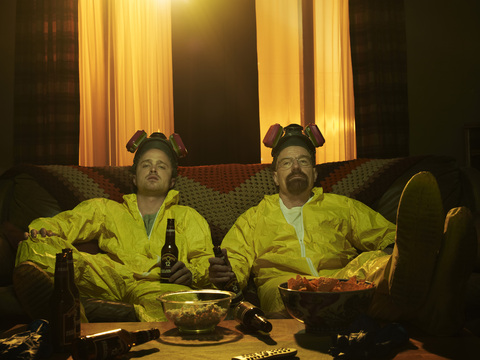 If you read up on your truly classic cocktails, you’ll find that, like sours and highballs, a flip is not just one drink but an entire category of drinks. The Egg Sour, for example, is actually a delicious hybrid of a sour and a flip. A sour, you see, always contains fresh lemon or lime juice. A flip always contains a raw egg.
If you read up on your truly classic cocktails, you’ll find that, like sours and highballs, a flip is not just one drink but an entire category of drinks. The Egg Sour, for example, is actually a delicious hybrid of a sour and a flip. A sour, you see, always contains fresh lemon or lime juice. A flip always contains a raw egg.
Even if you’re a reasonably sophisticated cocktail sipper, odds are, the closest you’ve gotten to a flip is freshly made Eggnog, which is actually closer to a flip than you might think. Usually called a Gin Flip, Whiskey Flip, Port Flip, etc. the recipe really doesn’t change a whole lot, because it doesn’t really have to. I’ve gone on and on here about the wonders of egg white in cocktails; it’s no surprise, then, that a whole egg is no less delicious. Imagine a lighter, fluffier, more refreshing and somewhat less fattening version of Eggnog and you’ll be on the right track.
The Flip
1 whole egg
1 1/2 – 2 ounces gin, whiskey, rum, port, sherry, etc.
1-3 teaspoons sugar or 1/4-1/2 ounce simple syrup
Grated nutmeg (fairly mandatory garnish)
Combine the egg, booze and sweetener in a cocktail shaker. Use less sugar/simple syrup — one teaspoon or 1/4 ounce of syrup –if you’re booze is something sweet, like port or sherry. You can also use less sugar if you’re simply allergic to sweet drinks. (Cocktail guru Robert Hess, whose taste sometimes leans towards the austere, calls for just one teaspoon of sugar, even when your base liquor is gin; I think that’s going overboard, or underboard, as the case may be.)
Shake vigorously without ice to properly emulsify the egg. Add lots of ice and shake again, even more vigorously. Strain into a chilled cocktail glass, smallish rocks glass, or a wine glass. Top with nutmeg and toast our fine, feathered egg producing friends.
****
I’m giving you a fair amount of range on how to make this, but you’ll have to use just a little bit of your own common sense about your taste buds to make the very best of this. Since I have an admitted sweet tooth, the most surefire version of this for me involved only 1 1/2 ounces of a spirit and an entire tablespoon (three teaspoons) of sugar or the liquid near equivalent of 1/2 ounce of simple syrup.
In the case of port, however, I found that one teaspoon of sugar was plenty of additional sweetness. Flips have also been made using ordinary wine which presumably is less sweet than port, so I’d suggest using maybe two or three teaspoons with all but the sweetest wines.
I did find that using the full 2 ounces of whiskey with a tablespoon of sugar did result in a wonderfully balanced drink that was a bit less of a dessert, but that using the same amount of gin wasn’t as much fun as it should have been. At least when I tried it with some Plymouth Gin I’d just purchased, the boozy, tangier aspects of the gin overwhelmed the sweeter, very refreshing aspects of the concoction.
I had a similar problem when I tried a flip with just 1 1/2 ounces of 100 proof Knob Creek bourbon, which was simply overpowering where even 2 full ounces of 80 proof Basil Hayden had been just about perfect. On the other hand, the 94 proof Redemption Rye I tried, which is maybe a bit sweeter than other ryes, was also pretty perfect. I’m sure less expensive brands like Jim Beam, Evan Williams, or my old pal, Canadian Club, would also be pretty awesome.
Leaving aside the booze and getting to the real nitty gritty, I used a large supermarket egg in all of my adventures. While I have to note that all the usual raw egg provisos apply (if you’re immune compromised in some way, please use pasteurized eggs), I should also add that some of the older recipes call for a small egg, which are pretty hard to find these days. For me, however, while an extra large and certainly a jumbo egg would probably be too much of a good thing for a drink this size, a large egg is about perfect.
Also, a lot of recipes insist on using freshly grated nutmeg for the garnish. I have no doubt that any flip would be better that way, but I’m too lazy/busy to bother with that and I suspect you are too.
It’s perfectly fine to use regular grocery store nutmeg, which is what I did. I’d hate to think of anyone being intimidated into not making this drink, which is for the most part not much harder to make than a Martini or a Manhattan. Touches like fresh nutmeg are why we spend borderline absurd amounts of money for a drink in a great craft cocktail bar; they aren’t a requirement at home.
Finally, readers who read a lot cocktail recipes will notice I haven’t made any mention of adding cream to a flip. I contemplated trying this drink that way, despite the calories, because I’m sure it would be delicious. I decided not to, because I’m even more certain it would have been Eggnog.






